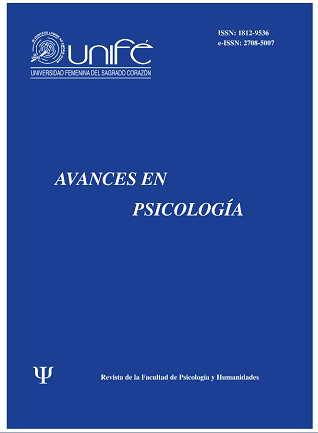Non-suicidal self-injurious and sociodemographic variables in adolescents in Lima
DOI:
https://doi.org/10.33539/avpsicol.2021.v29n1.2350Keywords:
Non suicidal self-injury, Sociodemographic variables, TeenagersAbstract
The objective of the research was to determine if there are significant differences in non-suicidal self-harm according to age, grade and sex; in 459 adolescents, high school students, whose ages
range from 12 to 15 years, from the city of Lima, and to whom the Self-harm questionnaire in Spanish (SHQ-E) was applied. Descriptive and inferential analyses were used to study the data using Spearman’s Rho correlation coefficient and the difference of independent groups with the Mann-Whitney U and Kruskal Wallis. The instrument was validated by exploratory factor analysis
(EFA) and a single factor with adequate levels of reliability (α = .87) and validity was identified. The results indicate that 29.8% presented self-injurious thoughts, 23.3% suicidal thoughts, and
19.8% presented self-injurious behaviours. It was shown that there is a positive and significant correlation between the variables: self-injurious thinking and behaviour (rho = .77); suicidal
thinking and self-injurious behaviour (rho = .58). In the sociodemographic characteristics, there are statistically significant differences in self-injurious thoughts, suicidal thoughts and non-suicidal
self-injurious thoughts, only according to sex; women being more frequent. The main method of self-injury were skin cuts (61.5%), with greater frequency in women (40.7%); followed by blows,
being more frequent in men.
Downloads
Published
How to Cite
Issue
Section
License
Copyright (c) 2021 Norma Cabrera De la Cruz

This work is licensed under a Creative Commons Attribution-NonCommercial-NoDerivatives 4.0 International License.









